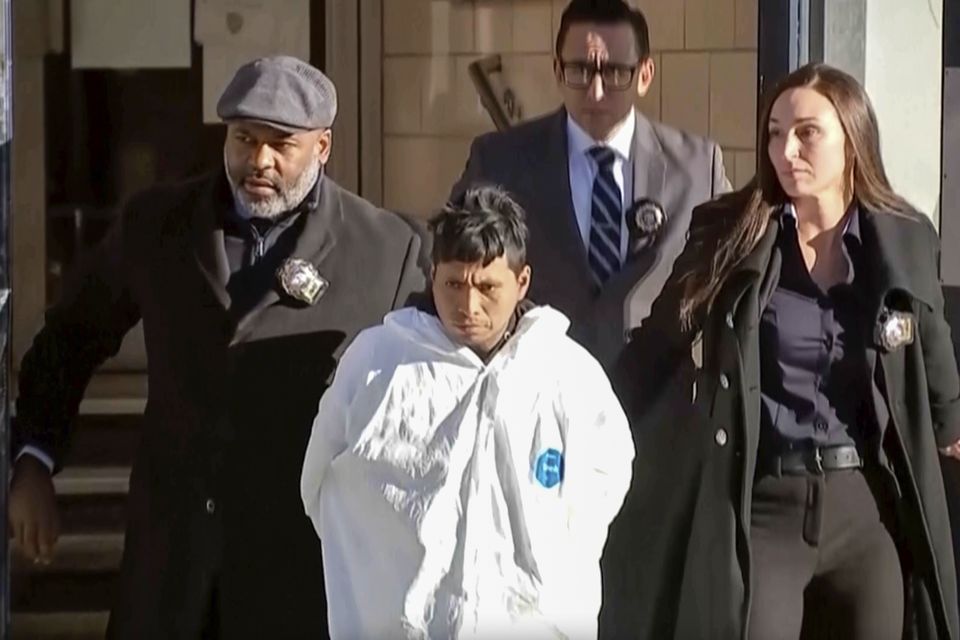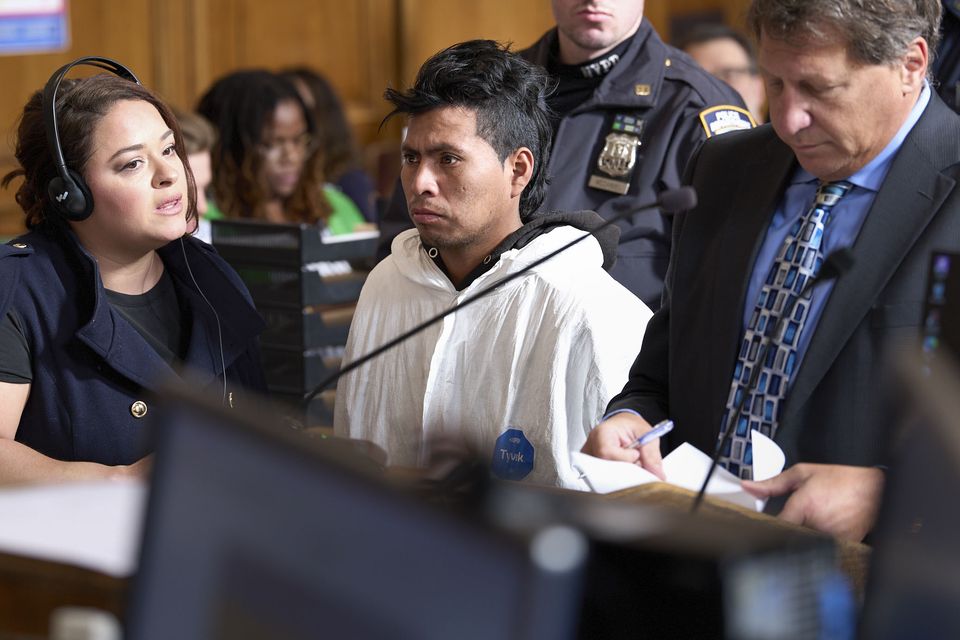The man accused of burning a sleeping woman to death inside a New York City subway train is due in court on murder and arson charges.
Sebastian Zapeta, 33, will appear in Brooklyn court in connection with the killing of Debrina Kawam, 57.
Prosecutors say Zapeta lit the New Jersey native on fire on a stopped F train at Brooklyn’s Coney Island station on December 22.
Zapeta then fanned the flames with a shirt before sitting on a platform bench and watching as Ms Kawam burned, they allege.
Prosecutors say Zapeta confirmed to police he was the man in surveillance photos and videos of the fire but said he drinks a lot of alcohol and did not recall what happened.
A suspect, identified by police as Sebastian Zapeta, accused in the burning death of a woman on a New York subway, is escorted by police (AP)
Zapeta, a Guatemalan citizen who authorities say entered the country illegally after being deported in 2018, faces multiple counts of murder as well as an arson charge.
The top charge carries a maximum sentence of life in prison without parole.
He previously faced a criminal complaint charge but in New York, all felony cases require a grand jury indictment to proceed to trial unless a defendant waives that requirement.
Prosecutors with Brooklyn district attorney Eric Gonzalez’s office announced Zapeta had been indicted in late December.
The killing has renewed discussion about safety in the nation’s largest mass transit system even as crime in the subway remains relatively rare.
Commuter crime is down for the second straight year, with a 5.4% drop last year compared to 2023, according to data released by police on Monday, which also showed a 3% overall drop in major crimes citywide.
Sebastian Zapeta, accused of setting a woman on fire inside a New York City subway train, appears in court on December 24 (Curtis Means via Pool/AP)
Still, New York City Police Commissioner Jessica Tisch said in a Monday news conference discussing the statistics that riders simply “don’t feel safe.”
In response, she said the department would surge more than 200 officers onto subway trains and deploy more officers onto subway platforms in the 50 highest-crime stations in the city.
“We know that 78% of transit crime occurs on trains and on platforms, and that is quite obviously where our officers need to be,” Ms Tisch said.
“This is just the beginning.”

